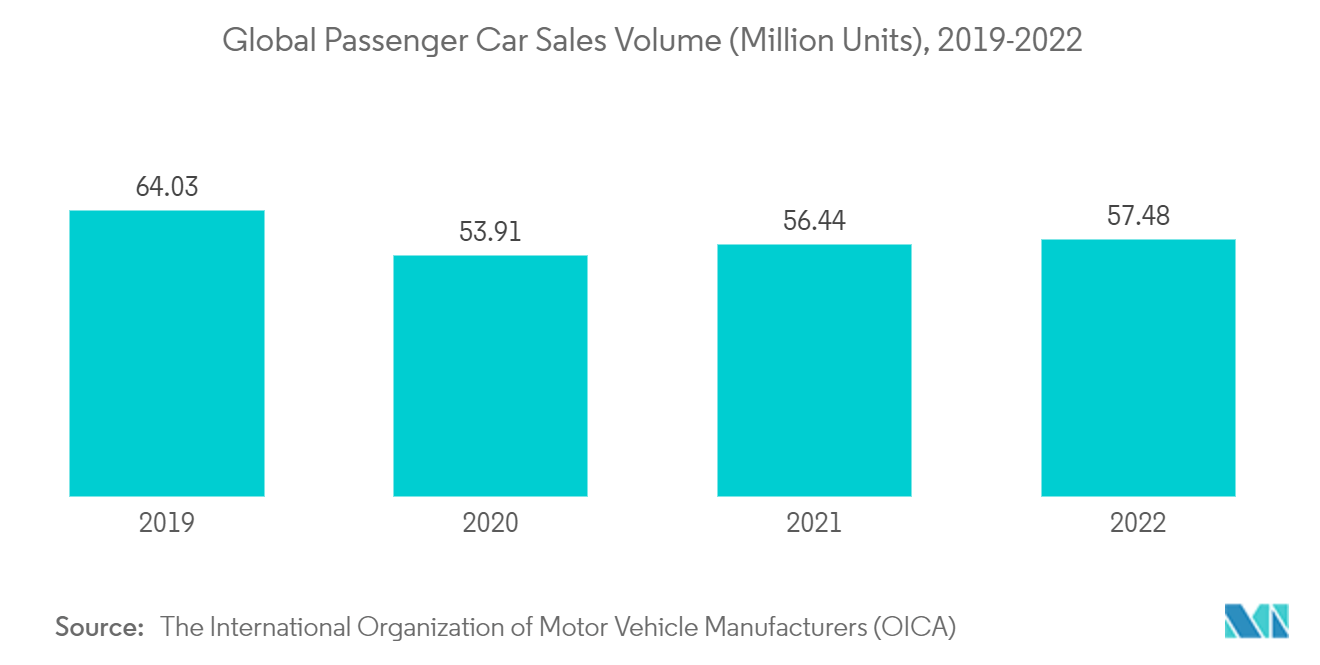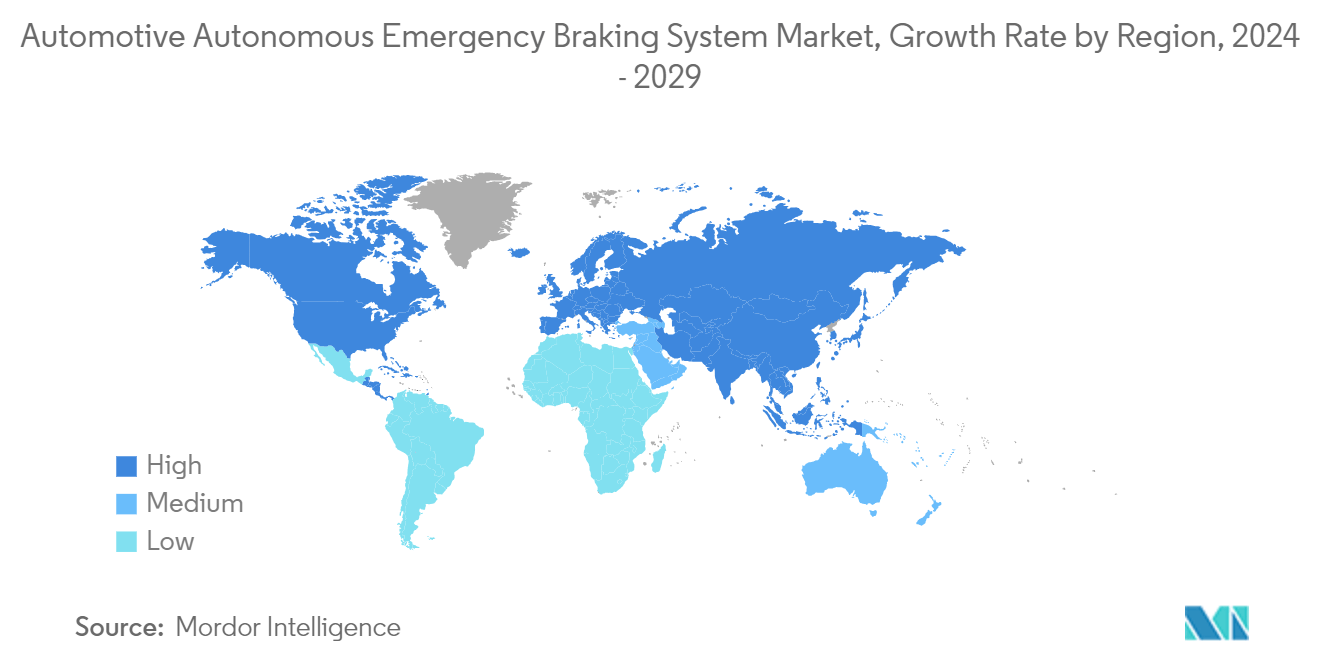Market Trends of Automotive Autonomous Emergency Braking System Industry
Passenger Cars Hold Major Market Share
The rise in demand for advanced safety features in vehicles and the increase in passenger car sales across major regions worldwide are likely to result in major growth for the market over the coming years.
Automatic emergency braking is an advanced safety technology system that autonomously slows or completely stops a vehicle in order to prevent an accident if the driver fails to respond. As with other advanced driver assistance technologies, automatic emergency braking is not 100% foolproof.
To cater to this growing demand, several automakers are launching new vehicle models with these technologies. Tesla is already offering AEB features as standard across all its cars, while other automakers like Daimler, BMW, and Ford are expected to provide AEB in all their upcoming models. Tesla’s cars are equipped with all the necessary hardware to achieve full autonomy. For instance,
• In November 2023, Renault introduced the Dacia Duster SUV in France. The new SUV offers a 4x4 Terrain Control transmission with five driving modes and an automatic emergency braking system.
• In November 2023, Toyota Motor Corporation introduced the Crown Signia mid-size crossover SUV in the North American market. The new SUV is equipped with an automatic emergency braking system.
The growing interest among vehicle owners worldwide in autonomous emergency braking systems is driving the global market. This demand has also been fueled by a rising number of road accidents. Governments worldwide are encouraging the development of several kinds of safety features in order to avoid road accidents.
Rising disposable incomes and customer preferences increasingly transitioning toward cars with fully loaded safety features are driving the market. The passenger cars segment is expected to lead the market during the forecast period.
As per research by EURO NCAP, 75% of all collisions in urban driving environments occur at speeds below 25 mph, with AEB having led to a 38% reduction in rear-end crashes. Autonomous vehicle technology offered with level 4 and 5 autonomous cars may become a large market worldwide over the coming years.
In line with the abovementioned developments globally, the demand for automatic emergency braking systems in passenger cars will be high over the coming years.

North America Expected to Lead the Market
Autonomous braking is provided with 51% of the model lines offered by OEMs across the United States. Tesla and Volvo offer AEB as a standard feature in 100% of their vehicles.
The US Department of Transportation's National Highway Traffic Safety Administration (NHTSA) recently issued a notice of proposed regulations that would require automatic emergency braking and pedestrian AEB systems for passenger vehicles and light trucks.
The proposed rule is expected to dramatically reduce pedestrian-related accidents and rear-end collisions. The NHTSA estimates that this proposed rule, if finalized, would save at least 360 lives per year and reduce the number of injuries by at least 24,000 annually.
In addition, these AEB systems would lead to a significant reduction in property damage caused by rear-end collisions. Many accidents could be avoided entirely, while others would be less destructive.
The Department's other road safety actions include the preparation of the Vulnerable Road User Safety Assessment to assist states with the required assessments for 2023. The safety performance of the state in terms of vulnerable road users and its plan to improve their safety are among the parameters assessed.
In line with growing technological advancements, OEMs must remain active in achieving their AEB commitments or face the possibility of brand erosion due to falling behind other market players in safety advances. In particular, the incorporation of AEB into the US government’s safety ratings may alter consumer perception.
Based on the aforementioned developments, the market is expected to witness high growth in the upcoming period.


